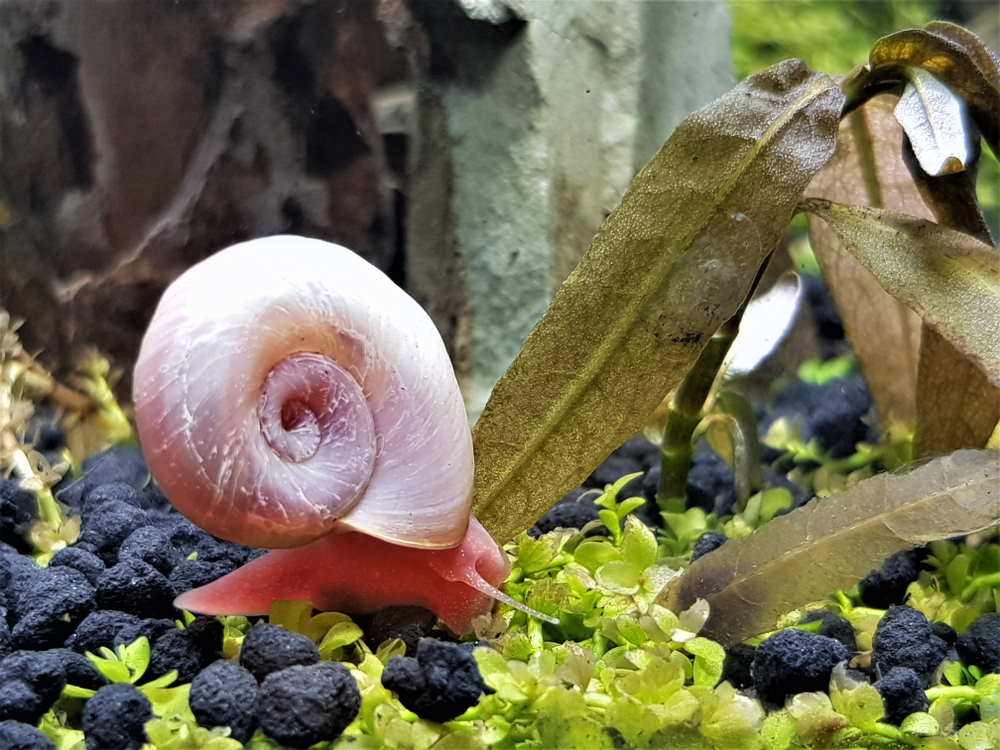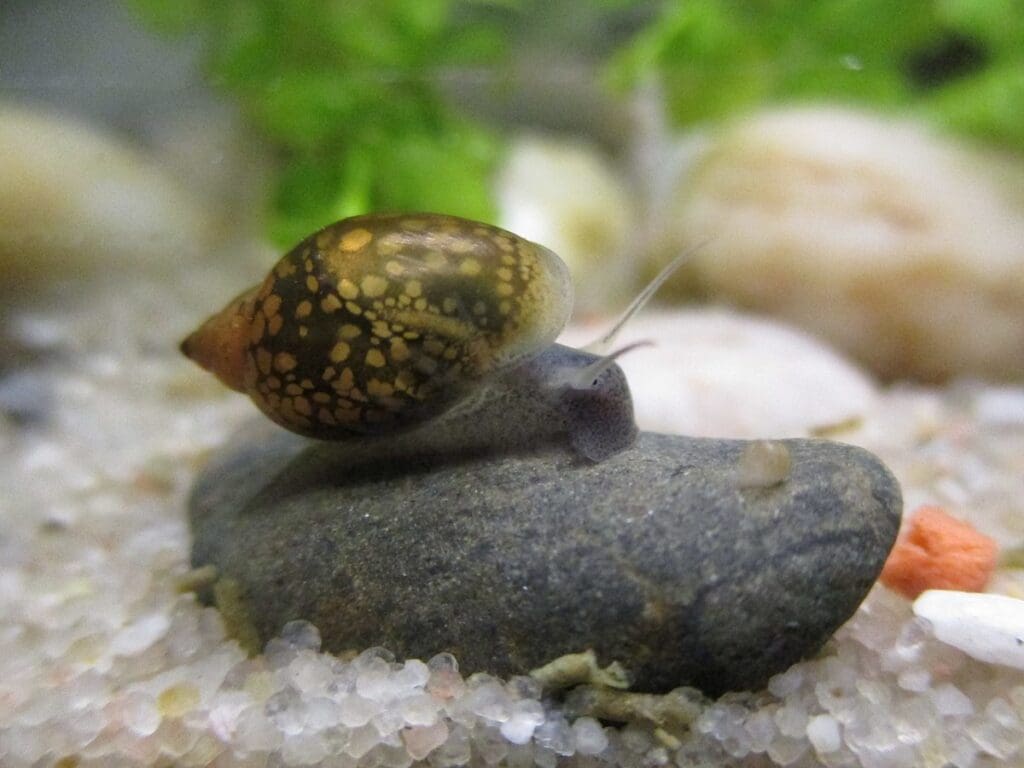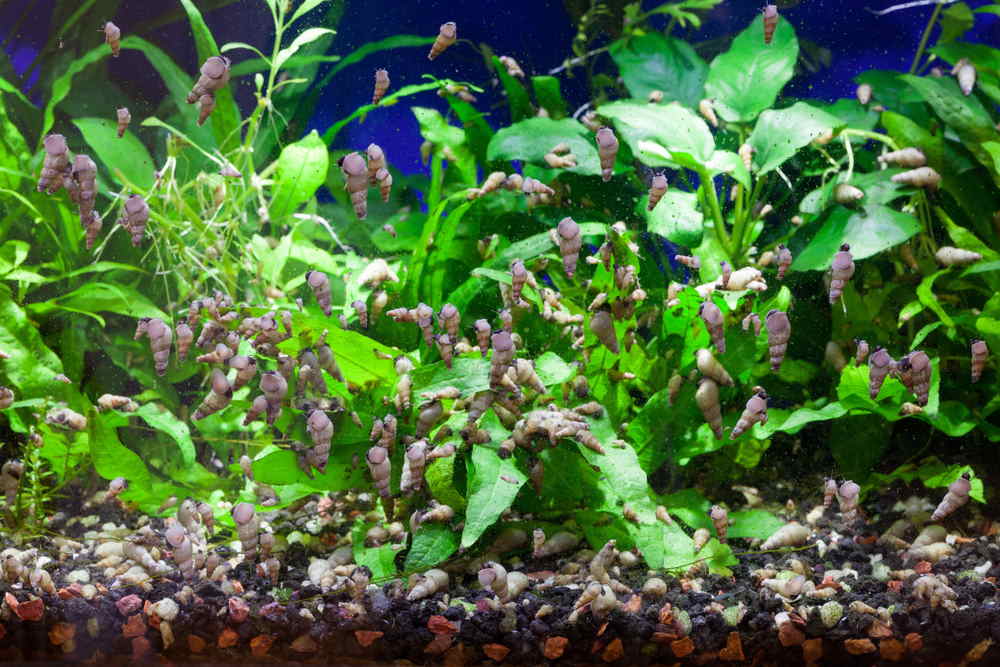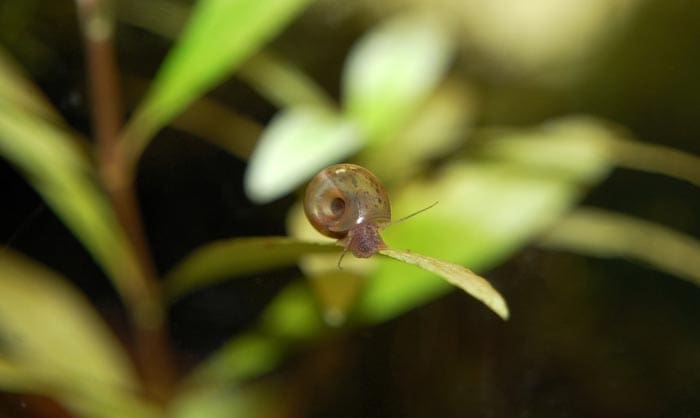Are pesky snails taking over your aquarium? Don’t worry, we’ve got you covered! In our article, “Pest Snails in Aquariums: How to Effectively Get Rid of Them,” we provide you with all the information you need to tackle this problem head-on. Whether you’re dealing with ramshorn snails, Malaysian trumpet snails, or any other unwanted gastropods, we’ll walk you through step-by-step methods to safely and effectively eliminate them from your beloved aquarium. Say goodbye to snails and hello to a clean and thriving aquatic habitat!

1. Introduction
Having an aquarium can bring joy and beauty to your home, but sometimes unwanted guests can make their way into your aquatic paradise. Pest snails, also known as nuisance snails, can quickly become a problem in aquariums if left unchecked. In this comprehensive guide, we will explore the different types of pest snails, the signs of infestation, and most importantly, how to effectively get rid of them. Whether you’re a seasoned aquarium enthusiast or a beginner, this article will provide you with the necessary knowledge to maintain a snail-free aquarium and keep your underwater ecosystem thriving.
2. Understanding Pest Snails in Aquariums
2.1 What Are Pest Snails?
Pest snails, as the name suggests, are snails that unintentionally made their way into your aquarium environment and can rapidly multiply under the right conditions. They are considered pests because their population can quickly escalate, causing a range of issues such as overpopulation, nutrient imbalances, and damage to aquarium plants. Understanding the characteristics and behavior of these snails will help you identify and effectively deal with them.
2.2 Why Are Pest Snails a Problem in Aquariums?
Pest snails can create a multitude of problems in your aquarium ecosystem. Firstly, their population can explode rapidly, leading to overcrowding and competition for resources. This can result in nutrient imbalances, reduced oxygen levels, and overall stress on the other inhabitants of your tank. Moreover, these snails have a voracious appetite and can damage or even consume delicate aquarium plants. Lastly, their waste products can contribute to organic waste accumulation, leading to poor water quality.
2.3 Common Types of Pest Snails in Aquariums
There are several common types of pest snails that you may encounter in your aquarium. The most prevalent ones include the Malaysian Trumpet Snail, the Pond Snail, and the Ramshorn Snail. Each of these snails has unique characteristics and behaviors that contribute to their status as pests. By being able to identify these species, you will be better equipped to address the issue and implement effective control measures.

3. Identifying Pest Snail Infestations
3.1 Signs of Pest Snail Infestation
Detecting a pest snail infestation early on is crucial in preventing these unwanted inhabitants from taking over your aquarium. There are several signs that may indicate their presence, such as the sudden appearance of tiny snails on the glass or substrate, nibbled or damaged plants, and an increase in waste production. Additionally, if you notice snails on newly acquired plants or decorations, there is a high probability of introducing pest snails into your tank.
3.2 Differentiating Pest Snails from Beneficial Snails
It is essential to differentiate between pest snails and beneficial snails in your aquarium. Beneficial snails, such as Nerite snails and Assassin snails, can contribute positively to the ecosystem by aiding in algae control and preying on pest snails. Pest snails, on the other hand, are characterized by their rapid population growth and destructive behavior. By understanding the key differences between these two types of snails, you can make informed decisions on control methods and prevent harm to the beneficial snails.
4. Prevention Measures
4.1 Quarantining New Aquarium Additions
One of the most effective ways to prevent pest snail infestations is to quarantine any new aquarium additions. Whether it’s plants, decorations, or even new fish, isolating them in a separate tank for a few weeks allows you to closely monitor for any signs of snails. This isolation period enables you to address any potential issues before introducing them into your established aquarium, helping to maintain a pest-free environment.
4.2 Maintaining Clean and Healthy Aquarium Conditions
Creating and maintaining clean and healthy aquarium conditions is vital in preventing pest snail infestations. Regularly cleaning the glass, substrate, and equipment, as well as performing routine water changes, will help eliminate any snail eggs or newly hatched snails. Additionally, ensuring that the water parameters are within the appropriate range for your aquatic inhabitants will promote their overall health and resilience against pests.
4.3 Avoiding Overfeeding and Organic Waste Accumulation
Overfeeding is one of the leading causes of excessive organic waste accumulation in an aquarium, providing an abundant food source for pest snails. To prevent this, feed your fish only the amount they can consume within a few minutes and remove any uneaten food promptly. Regularly cleaning the substrate and conducting water changes will also help minimize the accumulation of excess waste, creating an environment less conducive to pest snail proliferation.

5. Manual Removal Methods
5.1 Handpicking Snails
Manual removal is a straightforward and effective method for controlling pest snail populations, especially in smaller aquariums. Using tweezers or your hands, you can carefully pick out visible snails from the glass, plants, or decorations. Be sure to check hidden areas and crevices where snails may hide. Repeat this process regularly to keep the population in check and prevent further breeding.
5.2 Using Snail Traps
Snail traps are specialized devices designed to attract and capture pest snails without harming other inhabitants of your aquarium. These traps usually employ bait, such as vegetables or commercially available snail attractants, to entice the snails into a compartment from which they cannot escape. Placing multiple traps strategically in your tank can aid in reducing the snail population significantly.
5.3 Vacuuming and Siphoning
Vacuuming and siphoning are effective methods to remove snails and their eggs from the substrate and gravel in your aquarium. Using an aquarium gravel vacuum or siphon, gently hover over the substrate to suck up any snails or eggs present. Be cautious not to disturb any aquarium plants or disrupt the balance of the substrate while performing this task. Regular vacuuming and siphoning can help prevent future pest snail infestations.
6. Chemical Treatment Options
6.1 Introduction to Chemical Treatments
In severe cases of pest snail infestations, chemical treatments may be necessary to regain control over the situation. Chemical treatments usually involve using specific substances to eradicate or inhibit the growth of snail populations. It is important to note that chemical treatments should be utilized as a last resort and with caution, as some treatments may negatively affect other desirable organisms in your aquarium.
6.2 Recommended Chemical Treatments for Pest Snails
When considering chemical treatments for pest snails, it is crucial to choose products that are labeled specifically for aquarium use and safe for the aquatic environment. Copper-based medications, such as copper sulfate, and certain snail-control products containing active ingredients like fenbenazole or potassium permanganate, can effectively eliminate snails. However, always follow the manufacturer’s instructions carefully, and remove any remaining snail carcasses to prevent water contamination.
6.3 Precautions and Safety Measures
Before applying any chemical treatment, it is vital to quarantine the affected tank to prevent the chemicals from spreading to other aquariums. Additionally, remove any snail-eating inhabitants, such as loaches or pufferfish, as they may be sensitive to the chemical treatment. Ensure adequate aeration and filtration during and after the treatment to minimize stress on your fish and maintain optimal water quality. Monitor the water parameters closely, especially ammonia and nitrite levels, and perform water changes if necessary.

7. Biological Control Methods
7.1 Introduction to Biological Control
Biological control methods utilize natural predators or parasites to control pest snail populations without resorting to chemicals. This method can be both effective and environmentally friendly when implemented correctly. By introducing natural predators or snail species that prey specifically on pest snails, you can establish a balanced ecosystem that keeps the snail population in check naturally.
7.2 Utilizing Natural Predators
Certain fish, such as loaches, pufferfish, and some species of cichlids, are known to be voracious snail-eaters. Introducing these fish into your aquarium can help control pest snail populations over time. However, research the specific requirements and compatibility of these fish with your existing aquatic inhabitants before adding them to your tank. It’s also important to note that this method may not completely eradicate the pest snails but can help manage their numbers.
7.3 Introducing Parasitic Snail Species
Another biological control method involves introducing parasitic snail species that prey exclusively on pest snails. For example, certain assassin snails exclusively eat other snails, making them a useful addition to your aquarium if you’re specifically targeting pest snails. However, it’s important to closely monitor the population of the predatory snails to prevent an excessive number of predators in your tank.
8. Natural Remedies and DIY Solutions
8.1 Manual Removal with Vegetables
A natural and inexpensive method for manually removing pest snails is to use vegetables as bait. By attaching a piece of blanched vegetable, such as lettuce or cucumber, to the inside of a transparent container, you can attract snails. Place the container in the aquarium overnight, and in the morning, you’ll find several snails clinging to the vegetable. Remove the container and the attached snails from the tank, effectively reducing the pest snail population.
8.2 Chemical-Free Diluted Vinegar Solution
Vinegar, specifically white vinegar, has been used as a chemical-free solution to control snail populations. By diluting white vinegar with water in a ratio of 1:3 and carefully applying it to the glass or decors where snails are present, you can effectively deter them. However, exercise caution when using vinegar, as excessive amounts or direct contact with aquarium plants can cause harm.
8.3 Introduction of Botanical Extracts or Essential Oils
Certain botanical extracts or essential oils possess properties that can repel or eliminate pest snails. For instance, products containing neem oil or tea tree oil can be used in small quantities as a DIY solution. Adding a few drops to the affected areas or mixing it with water to create a spray can help deter snails. It’s important to note that some essential oils may be toxic to certain aquatic organisms, so always research the compatibility and use caution when applying them.

9. Maintenance and Preventive Practices
9.1 Regular Aquarium Cleaning and Maintenance
Regular cleaning and maintenance are instrumental in preventing pest snail infestations. Routinely clean the glass, substrate, and decorations, but be cautious not to disturb the aquarium’s balance. Perform regular water changes to maintain optimal water parameters and remove any accumulated waste. By staying on top of these maintenance tasks, you can create an environment that is less conducive to pest snail proliferation.
9.2 Regular Monitoring for Possible Infestations
Vigilant monitoring is essential in detecting possible pest snail infestations early on. Take the time to observe your aquarium regularly, checking for any signs of snails, unusual behavior in fish, or damaged plants. By catching infestations in their early stages, you can swiftly implement control measures, preventing the population from escalating. Regular monitoring also allows you to assess the effectiveness of any control methods you have implemented.
9.3 Balanced Feeding and Waste Management
Proper feeding practices and waste management are key in preventing pest snail infestations. Only provide your fish with the amount of food they can consume within a few minutes, removing any uneaten food promptly. This prevents excess organic waste accumulation, reducing the available food source for the snails. Balanced feeding and waste management contribute to the overall health and well-being of your aquarium inhabitants while discouraging pest snails from proliferating.
10. Conclusion
Pest snails can easily become a nuisance in your aquarium if left unchecked, leading to overcrowding, plant damage, and poor water quality. However, by understanding their behavior, early identification, and implementing the appropriate control methods, you can effectively manage their population and restore balance to your aquatic ecosystem. From manual removal methods to biological controls and natural remedies, there are various approaches to suit your preferences and the unique needs of your aquarium. Regular maintenance and preventive practices are crucial in preventing future infestations, allowing you to enjoy a snail-free environment and a thriving underwater world for years to come.

I am Randy, the author behind PestControld.com. Drawing from decades of experience, I aim to provide valuable insights, expert advice, and practical recommendations to help you make informed decisions when assessing viable pest control solutions.